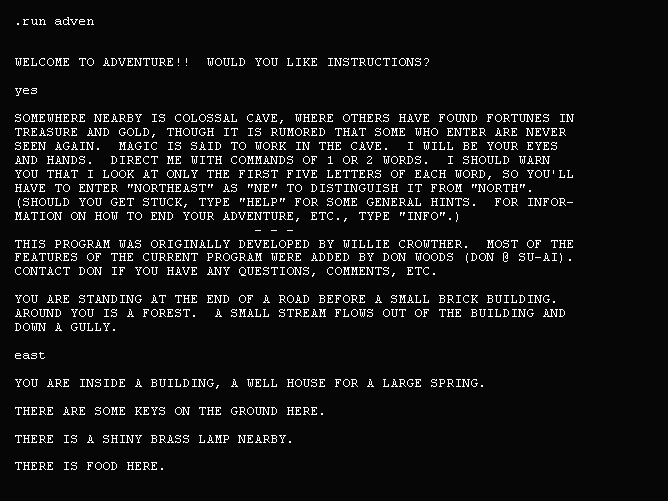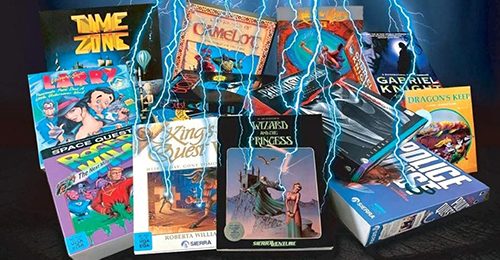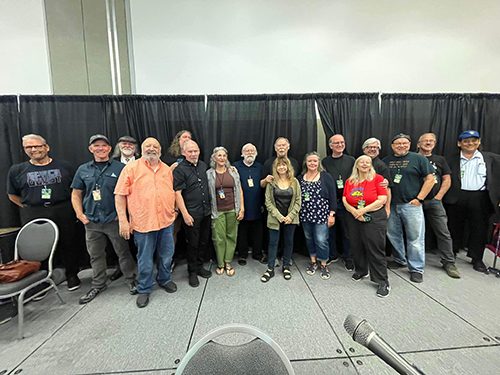The video game industry was once considered a passing fad. After an intense initial surge, it hit a saturation point that culminated in a devastating market crash in 1983. Many pioneers lost their livelihoods and many companies ended in bankruptcy. To financial experts it seemed to be a natural conclusion. What they didn’t anticipate was a resurgence in 1985. Since then, the video gaming industry has continued to grow, evolve, and thrive. The global video gaming market was estimated at almost $347 billion USD in 2022. By comparison, in the same period, the television industry earned $259 billion, the movie industry earned $77 billion USD, and the music industry earned $11 billion USD.
Video game development is the culmination of creative innovation and technological prowess. Software development, UI/UX, graphic design, network administration, web design, digital marketing, help desk… Almost every specialization in the field of technology plays an important role in the gaming industry.
One of the most popular and enduring genres in early gaming was “Adventure”. Adventure games are characterized by their emphasis on narrative-driven gameplay, puzzle-solving, and exploration. Unlike action games, which prioritize reflexes and hand-eye coordination, adventure games focus more on story, character development, and intellectual challenges. While its popularity waned over time, recent years have been promising for developers and fans alike. This blog will explore the origins of the genre, its decline, and of course its resurgence.
The Origins of Adventure Gaming

The roots of adventure gaming trace back to the mid-1970s with the creation of Colossal Cave Adventure, often simply referred to as Adventure. Originally developed by Will Crowther and later expanded by Don Woods, this text-based game allowed players to navigate through a complex cave system by inputting simple text commands. It was a pioneering effort that laid the foundation for future adventure games by introducing elements like exploration, puzzle-solving, and storytelling. While there is some debate as to whether it was indeed the first text adventure ever created, it is the one most commonly credited with launching and inspiring the genre.
In the late 1970s and early 1980s, companies like Sierra On-Line and Infocom emerged, pushing the boundaries of what adventure games could be. Sierra On-Line, founded by Ken and Roberta Williams, released Mystery House in 1980, the first adventure game to feature graphics. This marked a significant evolution from purely text-based adventures, blending visual elements with narrative-driven gameplay. Infocom, on the other hand, continued to innovate within the text adventure genre with classics like Zork, known for its intricate puzzles and rich storytelling.
The Golden Age and Subsequent Decline

The 1980s and early 1990s are often considered the golden age of adventure gaming. During this period, Sierra continued to thrive, releasing the revolutionary King’s Quest in 1984. The 3D animated adventure game became an instant hit and spawned numerous beloved franchises: Space Quest, Police Quest, Leisure Suit Larry, Quest for Glory, Gabriel Knight, and many more.
LucasArts, a division of Lucasfilm, joined the market with its own lineup of popular adventure games starting in 1986. Titles like The Secret of Monkey Island, Day of the Tentacle, and Grim Fandango became iconic for their witty writing, memorable characters, and imaginative worlds. These games not only captivated players, but also set high standards for narrative and humor in video games.
However, as the industry evolved, the popularity of adventure games began to wane. The rise of more action-oriented and visually intense genres, such as first-person shooters and real-time strategy games, shifted the focus away from the slower-paced, puzzle-heavy adventure games. The advent of 3D graphics also posed challenges for traditional adventure game mechanics, making it difficult for developers to keep up with the rapidly changing landscape. By the late 1990s, many of the prominent adventure game developers had either shifted focus to other genres or closed down entirely, leading to a noticeable decline in the genre’s prominence.
The Resurgence of Adventure Gaming

Despite the decline, adventure gaming never truly disappeared. The genre saw a minor revival in the mid-2000s, driven by a combination of nostalgia and innovation. Independent developers played a crucial role in this resurgence, bringing fresh ideas and perspectives to the genre. Games like The Longest Journey and Syberia helped reignite interest, showcasing that there was still a passionate audience for story-driven, puzzle-centric games.
The advent of digital distribution platforms, such as Steam and GOG, made it easier for smaller studios to reach a global audience. Telltale Games emerged as a key player during this period, producing episodic adventure games based on popular franchises like The Walking Dead, Game of Thrones, and Batman. Telltale’s success demonstrated that there was still a significant market for well-crafted adventure games, blending traditional mechanics with modern storytelling techniques. Over the past decade, crowdfunding platforms like Kickstarter allowed many developers to come out of retirement with spiritual successors to their classic series.
In more recent years, the genre has continued to evolve, with a new wave of critically acclaimed titles like Life is Strange, Blackwell, Unavowed, and a virtual reality remaster of Colossal Cave. These games have pushed the boundaries of what adventure games can be, incorporating elements from other genres and exploring complex, mature themes. The rise of virtual reality (VR) and augmented reality (AR) has also opened up new possibilities for immersive adventure gaming experiences.
Adventure Game Fan Fair 2024

Adventure Game Hotspot hosted North America’s first Adventure Game Fan Fair July 26-28, 2024 in Tacoma, WA, USA. Hundreds of guests and dozens of industry legends were in attendance over the weekend including Ken and Roberta Williams, Lori and Corey Cole, Al Lowe, Mark Crowe, Jane Jensen, Robert Holmes, George Sanger, and many more.
The three-day event featured retrospective panels, live music, game demos, and an interactive museum. A variety of vendors were on hand selling the greatest in tangible nostalgic treasures such as Cygnus Entertainment, Canvas Quest, and Falcon Designs. The Adventure Game Awards included the event’s first Hall of Fame inductions. It was a memorable ceremony that honored both timeless classics and modern gems alike.
Conclusion
Adventure gaming has experienced a remarkable journey, from its humble beginnings with Colossal Cave Adventure to its golden age with Sierra On-Line and LucasArts, through its period of decline, and ultimately its resurgence driven by independent developers and innovative storytelling. As the gaming industry continues to evolve, adventure games remain a testament to the enduring appeal of interactive storytelling and the power of imagination. Whether you prefer classic text-based adventures or modern, visually stunning narratives, the genre continues to captivate players, proving that the spirit of adventure is very much alive and well.
While adventure development teams are typically smaller in scale compared to most genres, they all rely on a variety of technological expertise. ABM College offers diplomas in UI/UX Design, Graphic Design, Web Design, and many more – all of which can all open doors into exciting new adventures for your career. Talk to one of our helpful admissions advisors and begin your quest today! You can also read more exciting hints from our popular industry blogs.
About The Author

Content Editor & Writer, ABM College
As Content Editor at ABM College in Calgary, Alberta, Stephen plays a key role in advancing the college’s mission to provide relevant, high-quality training for today’s job market. He ensures all blog articles and web materials are accurate, clear, and genuinely useful for students, career changers, and industry professionals.
Stephen is also the author of a best-selling historical reference series documenting decades of computer and video gaming history — a body of work recognized by the Canadian Choice Awards.
Connect with Stephen on LinkedIn, explore his published works at Falcon Designs, or see his editorial expertise in action on the ABM College Blog.
